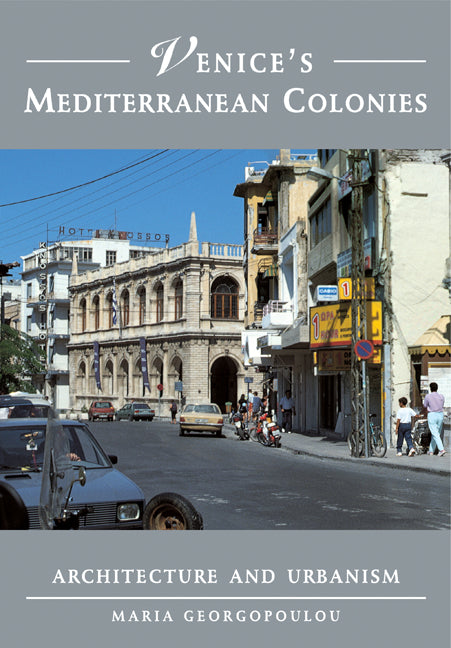Freshly Printed - allow 8 days lead
Couldn't load pickup availability
Venice's Mediterranean Colonies
Architecture and Urbanism
This 2001 text examines the dynamic relationship between colonizer and colony through architecture and urbanism.
Maria Georgopoulou (Author)
9780521184342, Cambridge University Press
Paperback, published 17 February 2011
400 pages
24.4 x 17 x 2.1 cm, 0.64 kg
Review of the hardback: '… thoroughly and impressively researched …' Architectural Research Quarterly
Originally published in 2001, this book examines the Venetian colonies of the Eastern Mediterranean and how their built environments express the close cultural ties with both Venice and Byzantium. Using the island of Crete and its capital city, Candia (modern Herakleion), as a case study, Maria Georgopoulou exposes the dynamic relationship that existed between colonizer and colony. She studies the military, administrative, and ecclesiastical monuments set up by the Venetian colonists which served as bold statements of control over the local Greek population and the Jewish communities who were ethnically, religiously, and linguistically distinct from them. Georgopoulou demonstrates how the Venetian colonists manipulated Crete's past history in order to support and legitimate colonial rule, particularly through the appropriation of older Byzantine traditions in civic and religious ceremonies.
Introduction: Venice's empire
Part I. Constructing an Empire: 1. The city as locus of colonial rule
2. Signs of power
3. Venice, the heir of Byzantium
Part II. Mapping the Colonial Territory: 4. Patron saints, relics, and martyria
5. The blessings of the friars
6. The Greeks and the city
7. Segregation within the walls: the Judaica
Part III. Symbols of Colonial Control: 8. Ritualizing colonial practices
9. Colonialism and the metropole
Conclusion.
Subject Areas: Second World War [HBWQ], Early history: c 500 to c 1450/1500 [HBLC], History of art: Byzantine & Medieval art c 500 CE to c 1400 [ACK]


